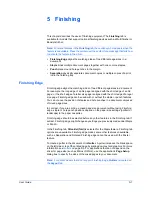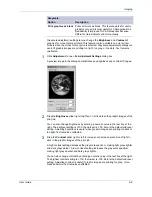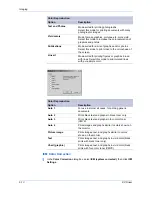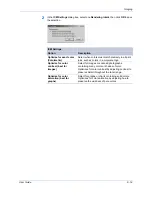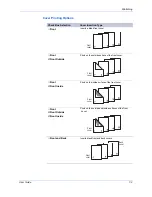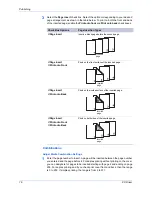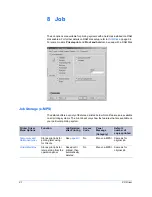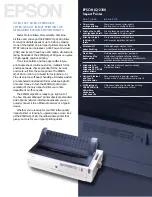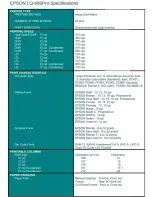
Imaging
User Guide
6-6
Optimization
Optimization selections are available when
KPDL
is selected in the
PDL Settings
dialog box.
CIE Option
CIE optimization is available when KPDL is selected in
Device Settings > PDL >
Select PDL
and
Allow data passthrough
is selected in
PDL Settings > Settings
> KPDL Settings
.
CIE refers to the Commission Internationale d'Eclairage, or in English the
International Commission on Illumination. The CIE standards organization has
developed device-independent color spaces that are supposed to be a true
representation of color as seen by the human eye. CIE color spaces are useful for
color space conversions. Abode's Lab Color space is based on CIE L*a*b*.
CIE optimization bypasses the normal procedure of processing every aspect of the
CIE color space used in applications such as Adobe Acrobat and Photoshop. This
feature will increase print speed for documents printed from these applications by
optimizing CIE data. It has no effect on print jobs that do not use CIE data. CIE
optimization should be selected for speed not accuracy, so printed output may be
different from appearance on the screen.
Halftone Screen (Monochrome Printing Systems Only)
An experienced user can adjust Halftone Screen settings to create shades of gray in
graphic images. The Halftone Screen process breaks down the image into dots.
Larger dots spaced close together create darker shades, and smaller dots spaced
farther apart create lighter shades. Shading can be varied by adjusting the number
of rows of dots, the angle at which rows of dots are placed, and the shape of the dots.
Halftone Screen is available only when
KPDL
is selected in the
Device Settings
tab,
in
PDL Settings
. If
GDI compatible mode
is selected in the
PDL Settings
dialog
box, Halftone Screen is unavailable.
Optimization
Option
Description
Fast
printing
Delivers images in binary format. Fast printing
decreases spool size and increases print speed. Use it
for most everyday printing needs.
Document
portability
Creates a PostScript file in ASCII text encoding. Unlike
the binary format created in Fast printing, the ASCII
text created with this selection can be edited.

